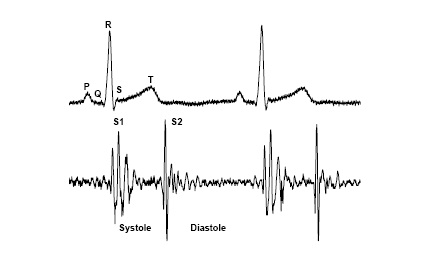What is a heart murmur?
An atrial septal defect (ASD) or a “hole in the heart” is a type of congenital heart defect in which there is an abnormal opening in the wall that normally divides the back chambers of the heart (the atria). It’s not clear why, but ASDs are more common in girls than in boys. A genetic cause of the ASD can be found in some families, but there’s no clear cause in the majority of children with an atrial septal defect. In order to understand the consequences of an ASD we have to start considering what happens in a normal heart. In the normal circulation, the blood which is low in oxygen returns to the right-sided back chamber (right atrium) and passes into the right-sided pumping chamber (known as the right ventricle) from where it is pumped to the lungs. Once the blood has been enriched in oxygen, it flows back to the left sided back chamber (left atrium) and subsequently passes into the left pumping chamber (left ventricle), from where it is then pumped into the general circulation to provide oxygen to the body. This video shows very clearly and simply what the blood flow in a normal heart is like.
What causes heart murmurs in babies and children?
As the heart is beating faster and harder and the chest wall is thinner in babies and children, such vibration can be picked up much more easily by doctors while they are listening to the chest. Most murmurs in children are innocent or functional which means that there is no underlying congenital heart disease (CHD) to explain the murmur. An experienced paediatric cardiologist is able to tell you if your child has a functional innocent murmur or otherwise. Innocent murmurs can also change in intensity at different ages (generally it gets softer as the child’s age increases), depending on medical circumstances (like fever, because an increase in body temperature or physical activity makes the heart pump more blood) and also depending on the position (most innocent murmurs disappear when the child is sitting upright). The intensity of murmurs also provides some important information on the cause of the murmur, as most innocent murmurs are generally of low degree (1 or 2 out of a 6 scale). Less often, murmurs can be related to the presence of an underlying problem such as a hole between two chambers (ASD or VSD), a small channel between the pulmonary artery and the aorta (PDA), because of leaky (mitral valve or aortic valve regurgitation) or narrow valves (pulmonary and aortic stenosis). Finally, the narrowing can be localized in the outflow of the pumping chamber causing a right-sided or a left-sided outflow tract obstruction.
When is the time to be referred to a paediatric cardiologist?
Children are referred to a consultant paediatric cardiologist when the primary care physician or the paediatrician looking after them is not sure that the murmur is innocent. The paediatric cardiologist will examine the child carefully and this is generally sufficient to exclude most of the significant underlying congenital heart defects (CHD). Nowadays, as echocardiography has become readily available, most children will also receive an echocardiogram in order to exclude those few cardiac problems that cannot be picked up by a careful examination. In some cases, your cardiologist might also request a chest X-ray or an ECG.
What happens next?
When a murmur is labelled as innocent this is very good news because it means that there is no underlying cardiac problem and the outlook then is always great. No follow-up appointment or test is generally required in children with innocent murmurs. If the murmur is caused by an underlying congenital heart defect then more testing might be required and in some cases the child might require medical or interventional treatment of the defect, which in some cases may include cardiac surgery.


